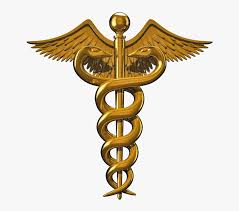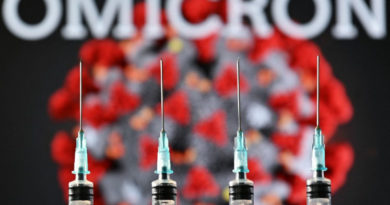SCI-TECH MEDICINE: COVID-19: Here’s what we know about coronavirus survivors.
Soldiers assigned to the Javits New York Medical Station conduct check-in procedures on an incoming coronavirus patient with local emergency workers in New York City, April 5, 2020.
.
.

More than 727,000 people have recovered from COVID-19.
U.S. Navy/Chief Mass Communication Specialist Barry Riley/Handout via Reuters

SPACE RESERVE FOR ADVERTISEMENT.
- More than 727,000 people worldwide have recovered from the coronavirus.
- Recovered COVID-19 patients may have a residual cough or fatigue for weeks after major symptoms disappear.
- Though long-term effects remain unclear, patients who develop severe pneumonia could come away with scarred lungs and reduced lung function.
- Recovery likely means immunity, at least for a period of time, so people who were once infected could go back to work with low risk of reinfection.
- Visit Business Insider’s homepage for more stories.

Most people who get the coronavirus recover. More than 727,000 such cases have been documented worldwide.
“Eventually, if all goes well, your immune system will completely destroy all of the virus in your system,” Tom Duszynski, director of epidemiology education at Indiana University–Purdue University Indianapolis, wrote in The Conversation. “A person who was infected with and survived a virus with no long-term health effects or disabilities has ‘recovered.'”
Still, many uncertainties remain: It’s not yet clear how many people have recovered, how the illness will affect them in the long run, or how long they’ll be immune.
Here’s everything we know about the people who have recovered from COVID-19.

Recovery by the numbers

Noam Galai/Getty Images
Although more than 727,000 people who had the coronavirus have recovered worldwide according to a Johns Hopkins University database, the true number is probably far higher than that.
Data on recoveries is less precise than case counts and death tolls, and many counties, states, territories, and regions don’t report how many of their residents have recovered.
“Recovered cases outside China are country-level estimates based on local media reports and may be substantially lower than the true number,” Douglas Donovan, a spokesman for the university, told CNN.
Plus, due to limited testing availability in some countries, including the US, the most severe cases are prioritized for official diagnoses. People who have mild symptoms, or none at all, are less likely to get tested — if they even seek testing in the first place. That means that many mild infections are not included in the count of total cases or recoveries.
That can skew experts’ understanding of the disease and how they predict its trajectory.
“Knowing the real number of infected people in the population would be very useful to have better models of when disease will peak and decline, and also when we can begin to return people to work,” Dr. Bala Hota, a professor of infectious diseases and Associate Chief Medical Officer at Chicago’s Rush University Medical Center, told CNN.

SPACE RESERVE FOR ADVERTISEMENT.
What recovery is like


SPACE RESERVE FOR ADVERTISEMENT.
Hota told CNN that many patients still have a mild cough and feel tired even once they’re considered recovered and are no longer contagious. It can take a long time to fully get back to normal.
“It takes anything up to six weeks to recover from this disease,” Dr. Mike Ryan, executive director of the World Health Organization’s Health Emergencies Program, said in a March press briefing. “People who suffer very severe illness can take months to recover from the illness.”
The process is different for patients who were put on a ventilator.
“What we’re seeing in patients who end up on ventilators is that they often stay on them for several weeks,” Dr. J. Randall Curtis, a professor at the University of Washington Harborview Medical Center, told US News & World Report. “And then, coming off the ventilator, they’re often going to be in the ICU for several days, and then back [in a regular hospital unit] for a few days to a week or so to regain their strength.”

SPACE RESERVE FOR ADVERTISEMENT.
Lasting effects

Junqiang Lei, Junfeng Li, Xun Li, and Xiaolong Qi

Dr. Shu-Yuan Xiao, a pathology professor at the University of Chicago School of Medicine, told ABC News that most people with mild cases of COVID-19 should recover “with no lasting effect.” The future is murkier for patients who develop severe illness, though.
Hong Kong’s Hospital Authority reported in March that within a group of 12 recovered patients, “two to three” showed decreased lung capacity in follow-up visits with doctors. Those few patients gasped for air when they walked, according to the South China Morning Post. Scans of nine patients’ lungs revealed signs of organ damage.
But because the coronavirus was first identified in December, there hasn’t been much time to research recovered patients and publish the findings.
“This is a little bit of an understudied group,” Hota said.
Experts do have a sense of the effects that severe pneumonia can have on the body, though. If a patient develops acute respiratory distress syndrome (ARDS), that can scar their lung tissue.
“It’s the same general thing that you have with any type of phenomena that’s severe enough to land you in the ICU,” Dr. Amesh Adalja, an infectious-disease expert at the Johns Hopkins Center for Health Security, told ABC News.
Adalja and Xiao both said that some severely ill patients may never recover full lung function.

SPACE RESERVE FOR ADVERTISEMENT.
Antibodies and immunity

Ray Chavez/MediaNews Group/The Mercury News/Getty Images

People who have been infected develop antibodies that can probably fight off the coronavirus if they encounter it again.
Dr. Anthony Fauci, director of the National Institute of Allergy and Infectious Diseases, said in an interview on “The Daily Show” that he was “willing to bet anything that people who recover are really protected against reinfection.”
But the World Health Organization warned on April 17 that there is no evidence that antibodies ensure immunity.
A Chinese study, which has not yet been peer-reviewed, tested 175 recovered COVID-19 patients and found that 10 of them had not developed any detectable coronavirus antibodies.
Still, many experts agree that recovered COVID-19 patients likely have some immunity.
“What we don’t know yet is how long that immunity will last, the quality of that immunity, and whether all individuals will generate a long-lasting high immune response,” Frances Lund, chair of the microbiology department at the University of Alabama at Birmingham, told Business Insider.
Fauci said on April 8 that because the virus doesn’t seem to be mutating much, people who recover will likely be immune should the US see a second wave of spread in the fall.
“If we get infected in February and March and recover, next September, October, that person who’s infected — I believe — is going to be protected,” Fauci said.
A handful of companies are developing blood tests that can detect COVID-19 antibodies to identify people who have recovered from the virus. Proponents of antibody testing say that it’s imperative in the fight against the outbreak — immune people could return to work safely.
“Ultimately, this might help us figure out who can get the country back to normal,” Florian Krammer, a professor in vaccinology at Mount Sinai’s Icahn School of Medicine, told Reuters. “People who are immune could be the first people to go back to normal life and start everything up again.”
However, some reports have stoked fears that immunity doesn’t last as long we’d hope. China, South Korea, and Japan have all reported people who recovered from the coronavirus and later tested positive. But those cases seem to be rare exceptions — and possibly the result of testing errors, experts say.

SPACE RESERVE FOR ADVERTISEMENT.
When you can leave self-quarantine


If you’re sick and wondering how to know when you’ve recovered, the CDC’s guidelines depend on whether or not you were tested.
If you weren’t tested and probably won’t be, you should stay isolated until you meet three criteria: You’ve have had no fever for at least 72 hours (without fever-reducing medication), your other symptoms (such as shortness of breath or coughing) have improved, and at least seven days have passed since the onset of symptoms.
If you have gotten or will receive a diagnostic test, you need to test negative twice, 24 hours apart, before leaving isolation. Those tests must be done after you no longer have a fever (without fever-reducing medicine) and after other symptoms have improved.
Once you have met these criteria, you can leave your home for essential outings, in accordance with your city, county, and state rules. You should still minimize contact with others, though, as well as disinfect all surfaces, clothes, and objects you’ve touched.


SPACE RESERVE FOR ADVERTISEMENT.
Crystal Cox/Business Insider
Scientists still aren’t sure when a person with the virus stops being contagious to others, but a team of German researchers found that coronavirus patients “shed” high amounts of virus early on in their infection. (The research is not peer-reviewed yet, however.) In mild cases, the amount of the virus the gets shed decreased significantly after day five.
Patients with mild cases were not infectious eight days after they first started experiencing symptoms. The serious cases were not infectious after day 10 or 11.
Holly Secon contributed reporting.
Read the original article on Business Insider
.

All photographs, news, editorials, opinions, information, data, others have been taken from the Internet ..aseanews.net | [email protected] | Fo r comments, Email to : Al Bulario










